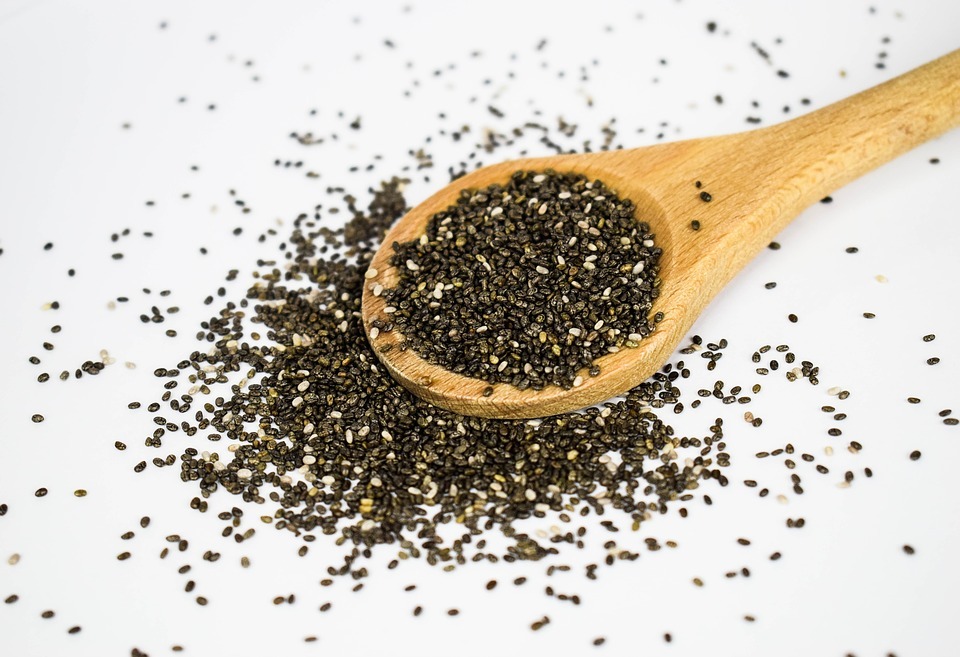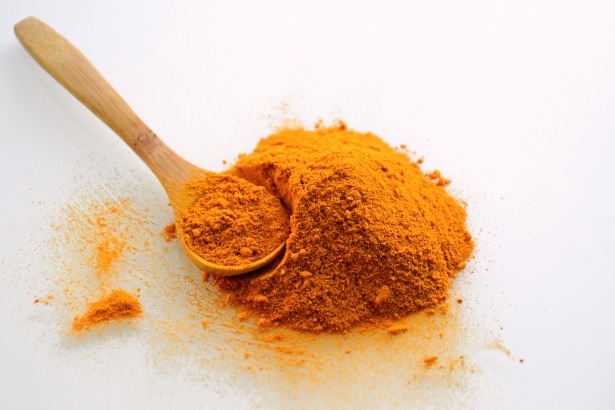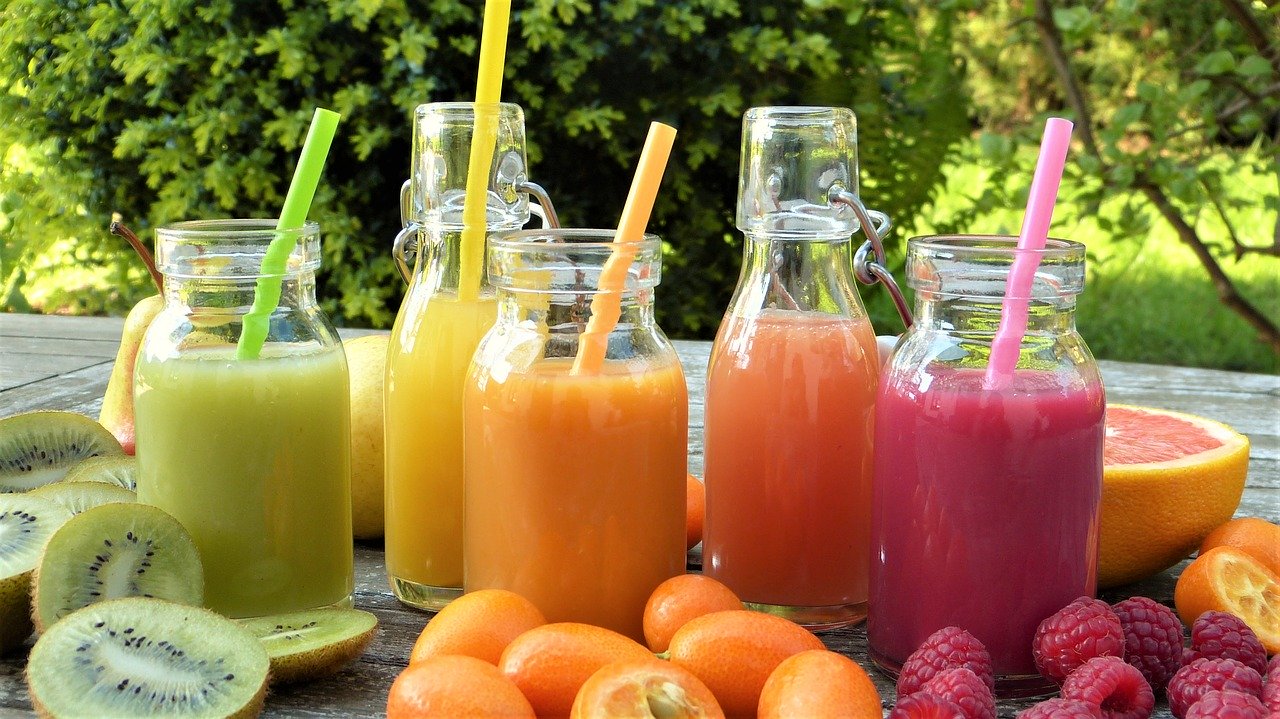Understanding Sugar Content in Fruit Juice: A Guide to Healthier Choices
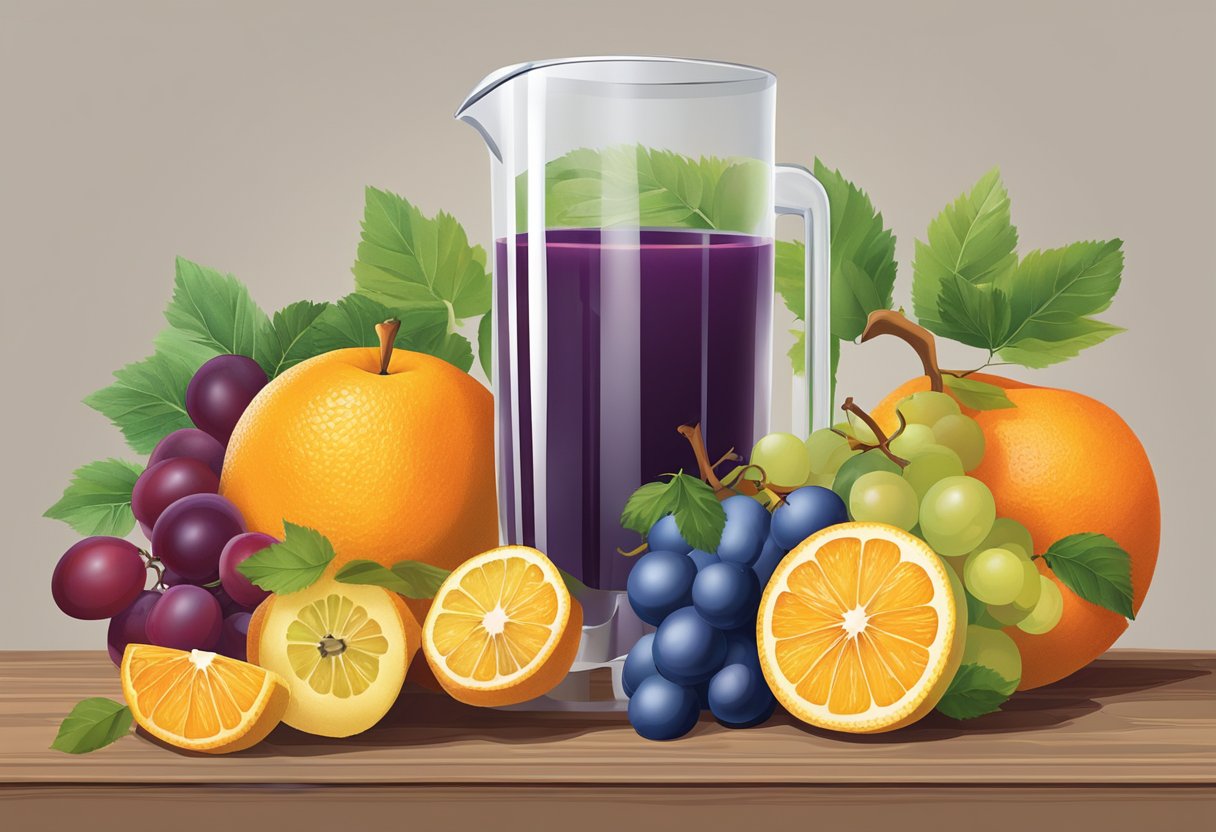
Fruit juice can be a tasty and refreshing drink, but many people don't know how much sugar it contains. A typical 8-ounce glass of fruit juice has about 25-30 grams of sugar, which is similar to the amount in soda. This high sugar content comes from the natural sugars found in fruits.
While fruit juice does provide some vitamins and minerals, it lacks the fiber of whole fruits. The fiber in whole fruits helps slow down sugar absorption. Without this fiber, the sugar in juice can cause quick spikes in blood sugar levels.
Not all fruit juices are equal when it comes to sugar. Some options like guava, pineapple, and grapefruit juice tend to have less sugar than popular choices like apple or grape juice. Picking 100% fruit juice with no added sugars is best for those who want to include juice in a healthy diet.
The Basics of Fruit Juice and Sugar Content
Fruit juice contains natural sugars from fruits. Some juices have added sugars too. Different types of juice have varying sugar levels.
Defining Fruit Juice
Fruit juice is made by squeezing or pressing fruits. 100% fruit juice has no added sugars. It only has the sugars found in whole fruits.
Fruit drinks are different. They mix fruit juice with water and sweeteners. These drinks often have more sugar than 100% juice.
Some juices are made from concentrate. This means water was removed and then added back later.
Different Types of Sugars in Fruit Juices
Fruit juices contain natural sugars like fructose, glucose, and sucrose. These come straight from the fruit.
Fructose is the main sugar in most fruits. It's very sweet. Glucose gives quick energy. Sucrose is made of fructose and glucose combined.
Some juices have added sugars too. These can be table sugar, corn syrup, or other sweeteners. Added sugars boost calories without adding nutrients.
Natural and added sugars affect the body differently. The body processes them in unique ways. Knowing the sugar types helps make smart juice choices.
Nutritional Profile of Fruit Juices
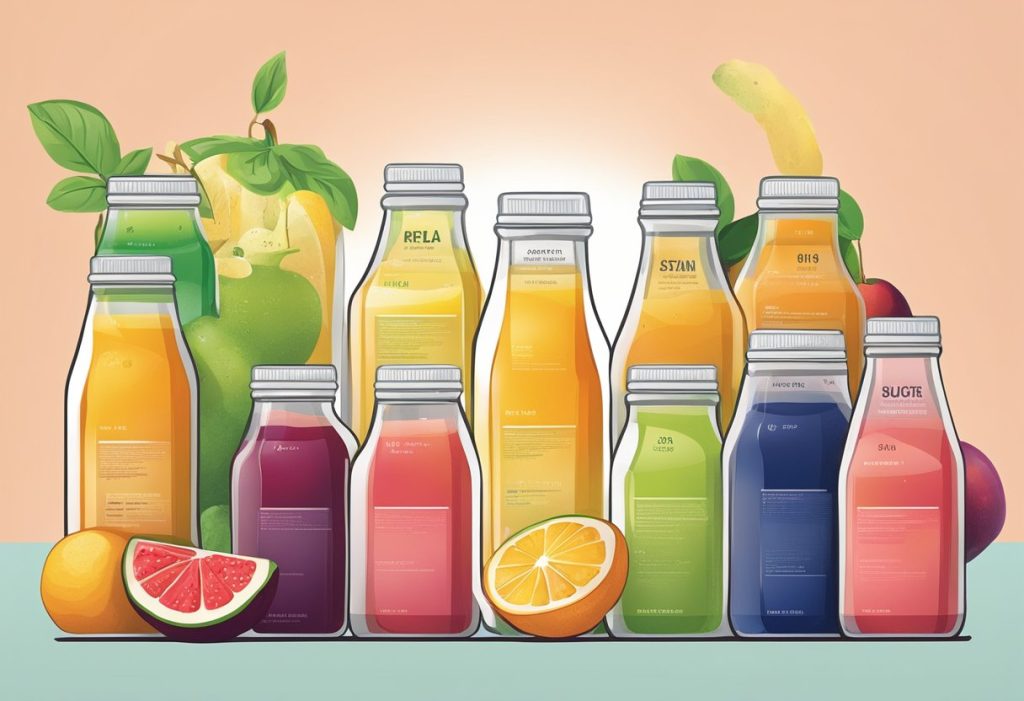
Fruit juices pack in vitamins and minerals but often lack fiber compared to whole fruits. The exact nutrient content varies between different types of juice.
Vitamins and Minerals in Juice
Fruit juices offer a concentrated source of certain vitamins and minerals. Many are rich in vitamin C, which supports the immune system and helps with iron absorption.
A cup of orange juice provides over 100% of the daily vitamin C needs for most adults. Apple and grape juices contain less vitamin C but still offer some.
Potassium is another key mineral found in fruit juices. This electrolyte aids heart and muscle function. Prune, pomegranate, and orange juices rank high in potassium content.
Some juices also supply smaller amounts of B vitamins, vitamin A, calcium, and magnesium. The exact mix depends on the fruits used.
Fiber Content in Different Juices
Most fruit juices contain very little fiber compared to whole fruits. The juicing process removes most of the fiber-rich pulp and skin.
Some juices with pulp retain a small amount of fiber. For example, a cup of orange juice with pulp has about 0.5 grams of fiber. Prune juice is an exception, with around 2.6 grams of fiber per cup.
Clear juices like apple and grape have almost no fiber. This lack of fiber means juices don't provide the same fullness and digestive benefits as whole fruits.
To boost fiber intake, choose whole fruits more often than juice. When drinking juice, look for options with pulp included.
Health Implications of Sugar in Juice
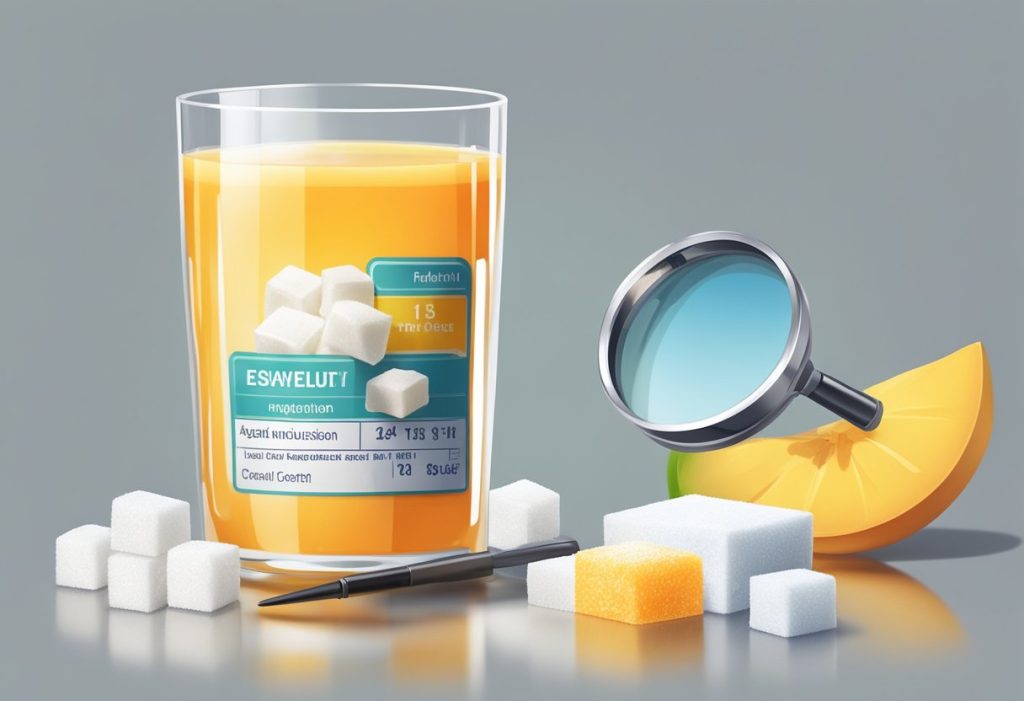
The sugar content in fruit juice can affect blood sugar, weight, dental health, and diabetes risk. These effects stem from how the body processes juice sugars compared to whole fruit.
Blood Sugar and Fructose Absorption
Fruit juice raises blood sugar quickly. The sugars in juice are absorbed fast because the fiber is removed. This causes a rapid spike in blood glucose levels.
Fructose, a main sugar in fruit juice, goes straight to the liver. The liver turns excess fructose into fat. This can lead to insulin resistance over time.
Whole fruits have fiber that slows sugar absorption. This results in a more gradual rise in blood sugar. Eating whole fruit is better for blood sugar control than drinking juice.
Weight Management and Obesity
Drinking fruit juice may make it harder to manage weight. Juice has a lot of calories but doesn't make you feel full like whole fruit does.
People often drink juice in addition to their regular meals. This adds extra calories to their diet. Over time, these extra calories can lead to weight gain.
Studies show that drinking juice regularly is linked to higher rates of obesity. This is true for both adults and children. Whole fruits are a better choice for weight control.
Dental Health Concerns
The sugars in fruit juice can harm teeth. Bacteria in the mouth feed on these sugars. This creates acid that wears away tooth enamel.
Fruit juices are often acidic too. The acid in juice can directly damage tooth enamel. This makes teeth more likely to get cavities.
Sipping juice slowly or throughout the day is worse for teeth. It gives the sugars more time to cause damage. Drinking juice quickly and then rinsing with water is better for dental health.
Diabetes and Juice Consumption
People with diabetes need to be careful with fruit juice. The quick rise in blood sugar from juice can be dangerous for them.
Regular juice drinking may increase the risk of getting type 2 diabetes. This is likely due to the high sugar content and lack of fiber.
For those with diabetes, whole fruits are a safer choice. They have fiber that slows sugar absorption. If choosing juice, it's best to limit the amount and drink it with a meal to lessen the blood sugar impact.
Examining Sugar Content in Common Fruit Juices
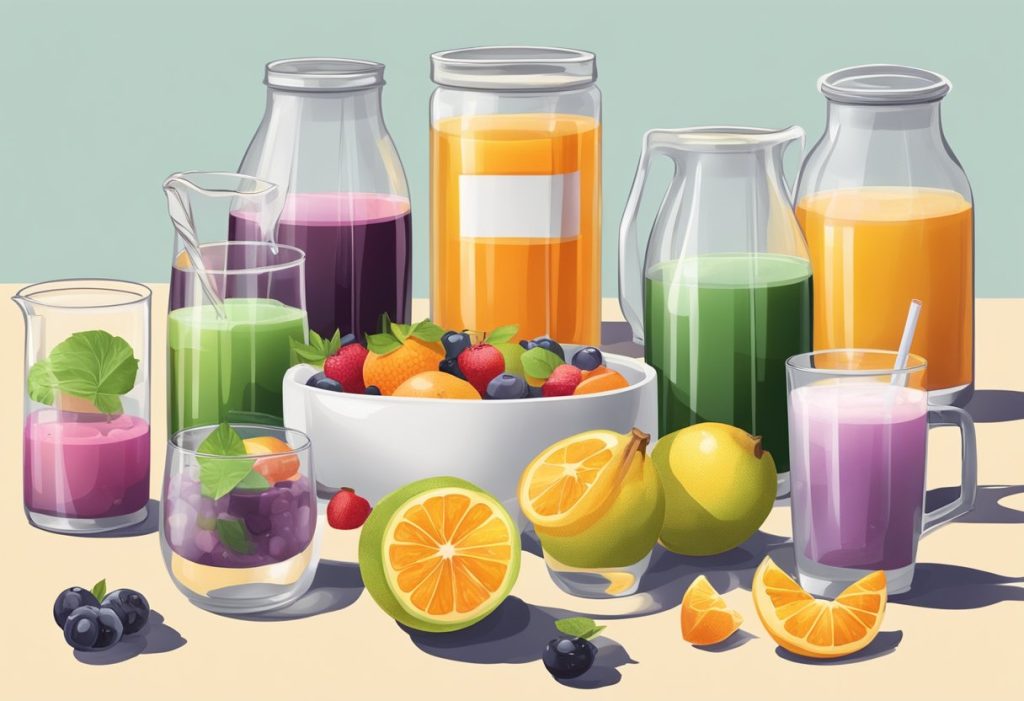
Fruit juices contain varying amounts of natural and added sugars. The sugar content can differ based on the type of fruit, processing methods, and additional ingredients.
Sugar Levels in Citrus Juices
Orange juice is a popular citrus drink with about 21 grams of sugar per cup. Grapefruit juice has less sugar, with around 18 grams per cup. Lemon juice is very low in sugar, containing only about 1 gram per cup.
Citrus juices get most of their sweetness from natural fruit sugars. These include fructose, glucose, and sucrose. The exact mix varies by fruit type.
Some brands add extra sugar to their citrus juices. This can boost the total sugar content by 5-10 grams per serving.
Berries and Exotic Fruits: A Comparison
Cranberry juice is tart and often has added sugars. A cup of sweetened cranberry juice can have up to 30 grams of sugar. Unsweetened versions have much less.
Pomegranate juice is naturally sweet. It contains about 32 grams of sugar per cup. This is higher than many other fruit juices.
Mango juice is also high in natural sugars. A cup typically has 25-30 grams of sugar. Watermelon juice is lower, with about 15 grams per cup.
The Reality of 'Dressy' Fruit Drinks
Fruit punch and other mixed fruit drinks often have extra sugar. A single serving can contain 30-40 grams of sugar or more.
These drinks may use fruit juice concentrates and added sweeteners. This boosts their sugar content well above that of plain fruit juices.
Some brands market these drinks as healthy options. But their high sugar levels can be misleading. It's important to check labels for total sugar content.
Many of these drinks have little real fruit juice. They may be mostly water, sugar, and artificial flavors.
Smart Consumption of Fruit Juices
Fruit juices can be part of a healthy diet when consumed wisely. It's important to know how to choose and drink juices in a way that balances their benefits with their sugar content.
Role of Juice in a Balanced Diet
Fruit juices offer vitamins and minerals, but they lack the fiber of whole fruits. A small glass of 100% fruit juice can count as one serving of fruit in a balanced diet.
Limit juice intake to 4-8 ounces per day for adults. This helps control calorie and sugar intake.
Pair juice with high-fiber foods like oatmeal or whole grain toast. This can help slow down sugar absorption.
For kids, the American Academy of Pediatrics suggests:
- No juice for babies under 1 year
- 4 ounces max per day for toddlers ages 1-3
- 4-6 ounces max per day for kids ages 4-6
- 8 ounces max per day for kids 7 and older
Understanding Labels and Serving Sizes
Read juice labels carefully. Look for "100% fruit juice" on the label. Avoid juices with added sugars or syrups.
Check the ingredient list. The first ingredient should be the fruit itself. Watch out for words like "concentrate" or "syrup."
Pay attention to serving sizes. A typical serving is 8 ounces (1 cup). Many bottles contain multiple servings.
Some juices list percent daily values for nutrients. This can help you compare options and choose more nutritious juices.
Alternatives to High-Sugar Juices
Try diluting fruit juice with water or sparkling water. This cuts down on sugar and calories while still providing flavor.
Make homemade smoothies with whole fruits and vegetables. Add protein sources like Greek yogurt or nut butter for a more filling drink.
Infuse water with fresh fruit slices for a refreshing, low-calorie option. Cucumber, lemon, and berries work well.
Choose vegetable juices, which are often lower in sugar than fruit juices. Tomato juice and carrot juice are good options.
Consider unsweetened tea or coffee as alternatives to juice. These provide antioxidants without added sugars.
Regulations and Recommendations
Fruit juice sugar content is subject to various guidelines and recommendations from health organizations and government bodies. These aim to promote public health and provide consumers with clear information about juice products.
American Heart Association Guidelines
The American Heart Association (AHA) sets strict limits on added sugar intake. For juice, the AHA suggests no more than 4-6 ounces per day for children. Adults should limit juice to small amounts. The AHA recommends eating whole fruits instead of drinking juice when possible. This is because whole fruits have more fiber and fewer calories than juice.
Juice can be part of a healthy diet in small amounts. But too much can lead to weight gain and other health issues. The AHA advises reading labels carefully to check sugar content in juices.
FDA Stance on Sugars in Juice
The FDA requires juice labels to list the percent of juice in a product. This helps consumers know how much real fruit is in their drink. The FDA does not set specific limits on sugar in juice. But they do require nutrition facts labels on all juice products.
These labels must show total sugars and added sugars. This helps people track their sugar intake. The FDA also has rules about what can be called "juice" on a label. Products must be 100% juice to use this term without qualifiers.
Scientific Committees and Nutritional Advice
The Scientific Advisory Committee on Nutrition (SACN) provides evidence-based advice on diet and health. They suggest limiting free sugars to no more than 5% of daily calories. This includes sugars in fruit juice.
SACN notes that juice can provide vitamins and minerals. But it lacks the fiber of whole fruits. They advise that juice should not replace whole fruits in the diet. One small glass (150ml) of unsweetened juice can count as one of the 5 daily servings of fruit and vegetables.
Experts agree that moderation is key with fruit juice. It's best to enjoy juice as part of a balanced diet that includes plenty of whole fruits and vegetables.
Conclusion
Fruit juice can be part of a balanced diet when consumed in moderation. While it provides vitamins and nutrients, fruit juice is also high in natural sugars.
Whole fruits are generally a better choice than juice. They contain fiber that slows sugar absorption and helps you feel full.
Limiting juice intake to small servings can help manage overall sugar consumption. Reading nutrition labels is important to understand sugar content in different juices.
Freshly squeezed juices may have less added sugar than some commercial options. However, they still contain concentrated fruit sugars.
For those watching their sugar intake, diluting juice with water or choosing lower-sugar varieties can be helpful strategies. Unsweetened flavored waters or whole fruits make good alternatives.
Moderation is key when it comes to fruit juice. It can be enjoyed as an occasional treat as part of an overall nutritious eating pattern.


